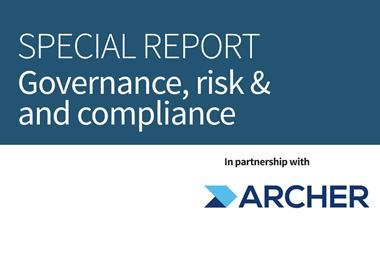Why employers unable to meet workers’ post-COVID expectations are seeing staff head for the exit
Nearly two years in, the COVID-19 pandemic has led to a series of unexpected consequences for companies and workers across the globe, from accelerating the working from home movement to the prevalence of flexible arrangements and employment terms.
The pandemic has prompted workers around the world to reflect on their employment status and, in many cases, quit their jobs. In the US, 4.4 million people left their roles in September, the highest figure on record, as employees gain a new perspective on life.
This phenomenon, seen from America to Asia and Australasia, has been given a name — The Great Resignation.
Burnout from the pandemic, a desire to spend more time with family, and a recalibration of life’s priorities have led workers to seek new employment. Employers unable to meet their workers’ post-COVID expectations have seen their staff head for the exit.
Undervalued and uninspired
Workers in the US are leaving their jobs for three main reasons, according to a McKinsey study. A total of 54% said they did not feel valued by their organisations, 52% said they didn’t feel valued by their manager, while 51% said they did not feel a sense of belonging at work.
While the Great Resignation has seen workers embrace new freedoms and seek other opportunities, it presents a significant headache for employers. Organisations face the huge challenge of figuring out how to keep hold of their best employees, lay the foundations for future success, and prevent disruption to their operations.
Skills shortages have hit economies, and employers are unable to recruit from overseas amid ongoing international travel restrictions, with nations at different stages in their recovery.
Anticipating and managing people risks has become more important than ever in this environment, and the heightened risks from the Great Resignation will give many organisations and their risk and HR managers pause for thought.
How can companies stop their employees leaving in their droves? What is the key to retaining and attracting new talent? Are organisations powerless to stop this trend? What are their contingency plans?
The challenge to keep hold of staff was highlighted by Aon’s Global Risk Management Survey 2021. Retaining talent moved higher up the list this year, and ranked as fifth and seventh biggest risk respectively for the Pacific and North America.
At October’s Parima Conference, Rahul Chawla, managing director for Southeast Asia & head of wealth management Asia, Human Capital Solutions at Aon, attributed this to “overheated labour markets”.
“The Great Resignation has really come to life in these two regions,” he told attendees at the virtual conference.
Chawla, based in Singapore, said there was a demand for certain skillsets in the current economy, with heightened demand for technology roles in the region. “The pandemic has accelerated that change,” he said.
Retaining talent will prove particularly difficult in fast-growing APAC economies. “Asia, with its high growth economies, is a competitive region when it comes to talent pools,” said Chawla. “As organisations have accelerated their transformation agenda they have found it difficult to access talent from different markets in Asia due to closed borders and restricted talent.”
With so much pressure on organisations to keep their best workers, companies will need to adopt a fresh approach to keeping their staff happy.
“As organisations rethink their operating models and business strategies, they also need to reshape their employee value proposition by looking at working models, compensation and benefits strategies, and career opportunities,” Chawla advised. “This requires building talent strategies on the back of analysing robust data from various sources.”
Overall, the Aon survey found that a number of “people risks” have been raised by the pandemic. He predicted the effects would be long-lasting and would need to be factored into long-term recruitment and retention strategies.
“Rising healthcare costs, manpower shortages and gender pay gap are a few [drivers},” he said. “Asian markets have been experiencing high inflation on healthcare costs over the last few years. This has been exacerbated by the pandemic, as employees also experience wellness and mental health issues which not only lead to productivity losses for firms but also added employee costs.”
“With digital transformation being accelerated across industries, talent with skills to drive and lead this transformation is in short supply. Lastly, we also need to understand the impact of home working, schooling on participation of women in the workforce as well as career and pay growth,” he added.
Why ESG matters
The role of HR and recruitment teams will become even more pivotal in years to come. According to global advisory firm KPMG, the disruption from the pandemic has led to an “increased desire for people to work for an organisation that has true purpose and meaning, and one that operates with high environmental, social and corporate governance (ESG) standards”.
The advisory firm believes “focus on the workforce has become paramount”, and says HR leaders will need to engage with their employees to determine “what they need and why”. “Really listening to employees can also help every align with the purpose and understand what they need to be inspired, to grow and stay with the organisation.”
KPMG argues that since the shift to working from home, “mental health, employee wellbeing and work-life balance have taken centre stage. With this comes the need to be more human and genuine with employees”.
Australia-based risk consultant and president of the RIMs Australasia Chapter Eamonn Cunningham believes organisations may be overlooking the threat posed by the Great Resignation and fast-changing employment trends.
“This is a major issue, for several reasons. Firstly, many organisations do not realise the full extent of the potential adverse impact this will have on them, until of course it’s too late. If you do have your finger on the pulse and recognise the potential impact of the Great Resignation, it is not easily solved. Simply putting money in may well do more harm than good,” he says.
Cunningham says workers, rather than employers, will continue to hold the balance of power in the labour market. Employers will be expected to offer more flexibility to their staff, as habits from the pandemic become entrenched in everyday working life.
“Broadly speaking when you look at the labour market right now it is most definitely a buyers’ market,” he says. “Assuming that you did actually keep your job during the dark days of COVID, you would have been reconditioned to expect something quite different as you emerge from that period. Long gone are the days when you aspire to some form of work life balance as a right. Today applicants see full flexibility in working arrangements as a legitimate expectation.”
What can companies do to mitigate and manage people risk? According to Cunningham, every organisation will need to review its culture, hiring procedures, and attractiveness to job applicants.
“In the first instance, take a hard look at yourself,” he says. “Look at your core culture, ask yourself, is it appropriately orientated towards what your current employees and job applicants want today?”
While the labour market trends pose problems for companies, they also present an opportunity, Cunningham adds. The more adaptable organisations will be able to capitalise on the shortcomings of other groups’ strategies, he says.
“There is an opportunity here for some organisations, as all companies will not take the necessary action to shield themselves from this risk. So, whether you are in the market for good quality talent or simply wishing to retain your existing talent, it is all about developing a value proposition that compels people to discriminate in your favour. It needs to ooze relevancy to the needs of today’s workforce.”




















No comments yet